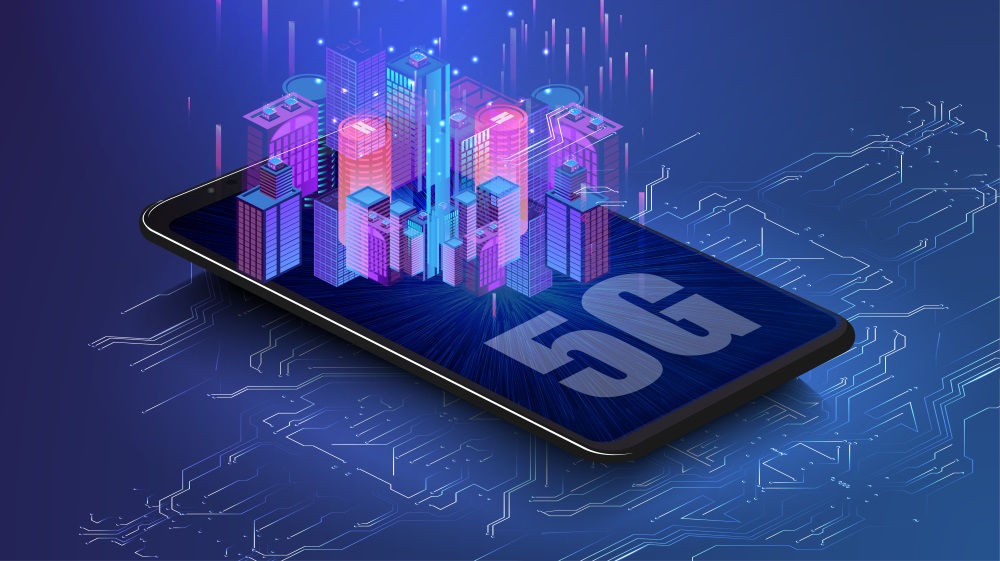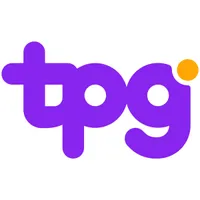5G home internet plans in Australia compared 2025

The best 5G broadband plans in Australia are more accessible than ever, with the cheapest plan now starting from AU$39.99p/m for the first six months, and 5G networks continuing to be rolled out and upgraded across the country. It's a worthwhile alternative to standard fibre internet, with reliable speeds, connectivity and competitive pricing.
Australia's 5G broadband plans operate via the same networks that phones rely on. Operated by Telstra, Optus and Vodafone, a 5G broadband plan will leverage one of these networks, though unlike a phone plan, it'll be restricted to a fixed address – meaning you won't be able to take it on the go.
That being said, you'll still be given freedom to place the modem router anywhere you want around the home, wherever signal is strongest. Compare this to the best NBN plans that require a modem be physically wired into a wall socket, and 5G home internet proves it's a lot more convenient.
That being said, I'd still recommend checking out the fastest NBN plans before committing to a 5G solution – as you'll get slower response times in games and less immediate speeds during video calls with a 5G connection.
Speaking of alternatives to 5G, I'd also direct your attention to the best 4G home internet plans – 4G networks are much more common across Australia, and while 5G plans are simply faster, 4G might be accessible at your address when 5G is not. These are some of the best NBN alternatives, though 5G is my personal favourite as it strikes the best balance between cost and speed.
I personally recommend 5G home internet plans over most other wireless internet solutions, but also as a strong NBN alternative if the national network is slow at your address, subject to constant dropouts or is nonexistent entirely. If you've been suffering from NBN outages or if you can't access the free NBN FTTP upgrade from your home, 5G home internet is worth keeping in mind.
Best 5G home broadband plans in Australia 2025
Why you can trust TechRadar
I've gone through all of the best 5G home broadband plans in Australia, and at the time of writing, the ones I've listed below are my favourites, pulling off great value with considerable speeds.
Best cheap 5G home internet plan
TPG | 5G home internet | No lock-in contract | AU$39.99p/m (for 6 months, then AU$59.99p/m)
With no need to pay for postage or equipment, TPG's 50Mbps maximum speed plan (18Mbps upload) comes with a discounted price of AU$39.99 per month for the first six months, after which it switches to AU$59.99. There's no capped data, so don’t feel limited with Netflix streaming and gaming. A modem router will be provided to you, and if you cancel your plan, you’ll need to return it within 30 days. This plan leverages the Vodafone 5G network.
• AU$39.99 minimum cost (including modem)
• AU$599.88 first year cost
• AU$719.88 ongoing yearly cost
Best overall 5G home internet plan
TPG | 5G home internet | no lock-in contract | AU$44.99 p/m (for six months, then AU$64.99 p/m)
It's rare that we'll highlight the same provider twice in a row, but TPG has its bases covered when it comes to covering the best overall 5G home internet plan and the cheapest on offer in Australia. For an extra AU$5 p/m, you can double your download speed to a maximum of 100Mbps, paired with an 18Mbps upload. After six months, the price reverts to AU$64.99 p/m. Don't worry about the modem as there's one included, though you'll need to return it if you cancel your plan or pay it out. This plan leverages the Vodafone 5G network.
• AU$44.99 minimum cost (including modem)
• AU$659.88 first year cost
• AU$779.88 ongoing yearly cost
Best premium 5G home internet plan
Optus Superfast 5G | Unlimited data | No lock-in contract | AU$84p/m(first 12 months, then AU$99p/m)
Optus advertises typical evening speeds of 210Mbps (20Mbps upload), but since there is no cap on the potential maximum, you may find you achieve speeds far greater than this. Due to factors such as your distance from the 5G tower and the line of sight, that typical evening speed isn’t an absolute figure – though the telco offers a 50Mbps minimum speed guarantee with this plan. If you find you do achieve the fast download speeds, it makes this plan competitively priced.
If you cancel within 36 months, you'll need to pay for the modem at a cost of AU$13 per month for every unused month within the initial three-year period.
• AU$552 minimum cost (including modem)
• AU$1,008 first year cost
• AU$1,188 ongoing yearly cost
5G Home Broadband FAQ
What is 5G home internet?
5G home internet is a broadband type that leverages mobile networks maintained by Telstra, Optus and Vodafone. 5G is the fastest mobile network band currently available in Australia and is in the process of being rolled out across the country – which is why it’s not available in a lot of places. It’s theoretically 10 times as fast as 4G, making it far better suited for things like high quality streaming and faster file downloads.
Will 5G replace the NBN?
It’s highly unlikely that 5G will 'replace' the NBN because, for the most part, they’re separate things altogether. The 5G networks operated by Australia’s three largest telcos is mainly used for mobile phone connections, whereas the NBN services homes and businesses with high speed fibre. In regional Australia, where fixed wireless NBN is used where fibre lines cannot reach, a combination of 5G and 4G technologies are used to service homes with internet.
But when talking about your household specifically, it could be worthwhile switching to 5G if your NBN connection has been failing you or you want to try an NBN alternative.
HFC and FTTP-type NBN plans are more likely to be consistent than 5G plans because of the use of high-speed fixed line tech. This provides lower latencies than what 5G could ever offer – even in the most optimal conditions.
But if you live in a household or area with consistent NBN dropouts, outages and maintenances (say for example, a home serviced by FTTN or FTTC connections), 5G home internet can represent a worthwhile alternative. If you want to stick to a fixed-line connection, we suggest looking into the NBN’s free fibre upgrade program.
Which companies have 5G home internet plans?
Australia’s three big telcos, Telstra, Optus and Vodafone, offer their own 5G home internet plans, but which smaller MVNOs have plans on offer?
Some top 5G home internet plans are available from Telstra, Optus, Vodafone, iiNet, Spintel, TPG and Yomojo. Plan speeds and prices can vary greatly between these providers. 5G coverage, even for mobile plans, is still not widely available across every telco in Australia, and 5G home internet plans are even more rare.
And this is pretty well summed up when you look at 5G coverage maps across Australia, including those from the telcos listed below:
• Telstra 5G coverage
• Optus 5G coverage
• Vodafone 5G coverage
When will 5G home internet be available?
5G home internet is here, with Telstra, Optus and TPG all now offering a 5G home internet option, along with a select few MVNOs. The major caveat, though, is that it’s only available in select areas.
As for availability, 5G coverage is available in all capital cities in Australia, though Darwin is only served by Vodafone’s 5G network at present. A number of regional centres across the country also have access to 5G coverage.
The initial rollout of 5G has been based on higher frequency bands, that deliver lots of capacity over short distances, which isn’t much use in rural areas where there are fewer people spread over much larger areas.
How fast is 5G? Is it faster than regular broadband?
5G can be quite a lot faster than many broadband connections, though you should take any headline figures with a grain of salt. Quoted 5G speeds are theoretical, as you’ll know if you’ve ever struggled to do anything on a one-bar 4G connection.
For 5G, speeds are expected to be between 100Mbps and 1Gbps, according to WhistleOut. On Telstra’s 5G home internet sign up page, the telco reports download speeds between 50Mbps and 600Mbps. However, you should only expect to reach top speeds under ideal conditions, and that qualifier is important because mobile data speeds are affected by signal strength, interference and congestion.
But it’s not just about straight line speed. Latency matters too. Latency is the gap between asking for something and getting it: a song, perhaps, or throwing a grenade at someone in a game. The longer the lag the worse the performance. On 4G, latency hovers somewhere between 50 to 100 milliseconds; on 5G that can drop into single digits.
We have a dedicated guide on how to do an NBN speed test, which you can also use to test your 4G or 5G speed.
Sign up for breaking news, reviews, opinion, top tech deals, and more.

Zac was part of TechRadar's Australian phones desk, covering the big releases from the likes of Google, Samsung and Apple. He continues to write about the Aussie EV market for this publication. He's previously written for Gizmodo Australia, Canstar Blue and The Daily Mail Australia (with articles on Nine, Junkee, Kotaku Australia and Lifehacker Australia).
- Max LangridgeSenior Editor, Home Entertainment & Broadband (APAC)

